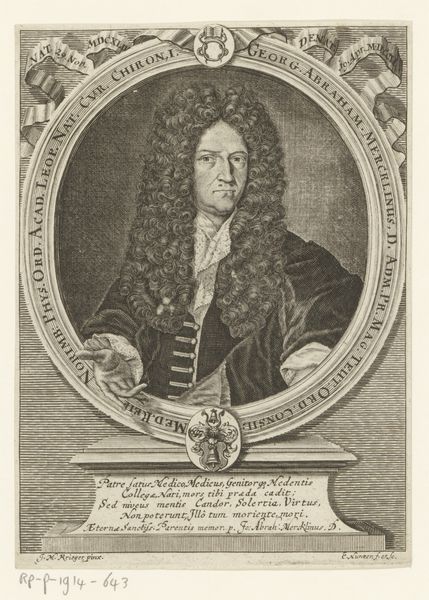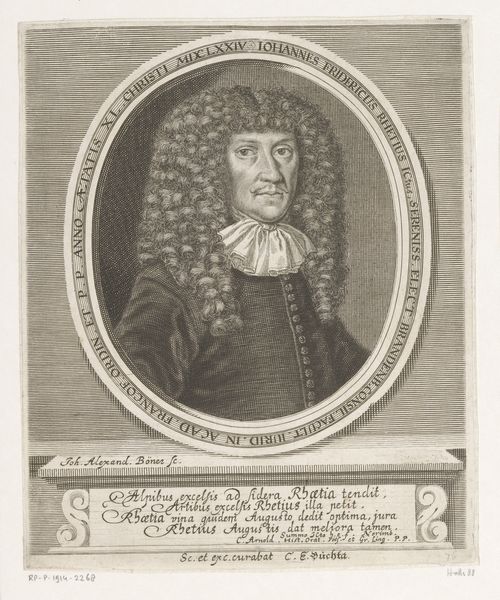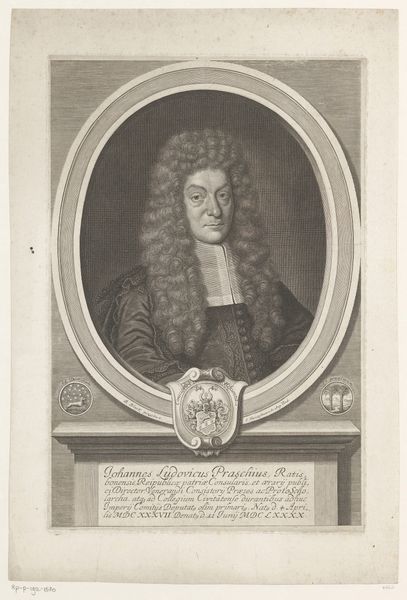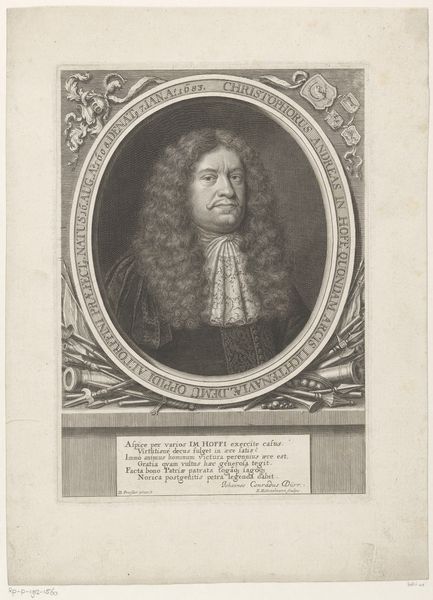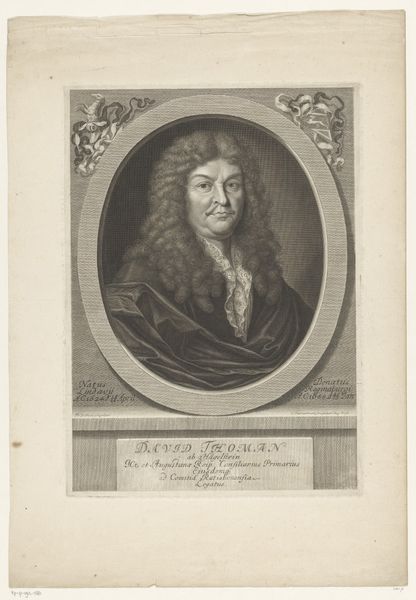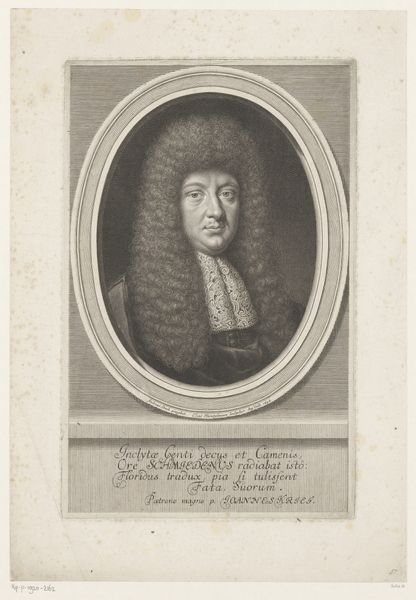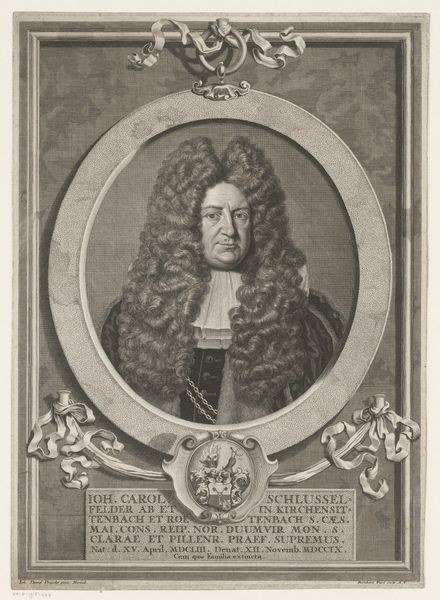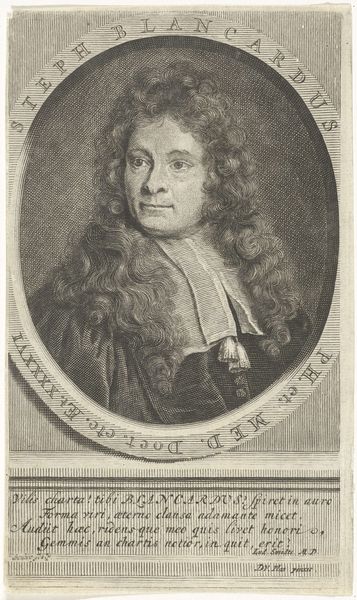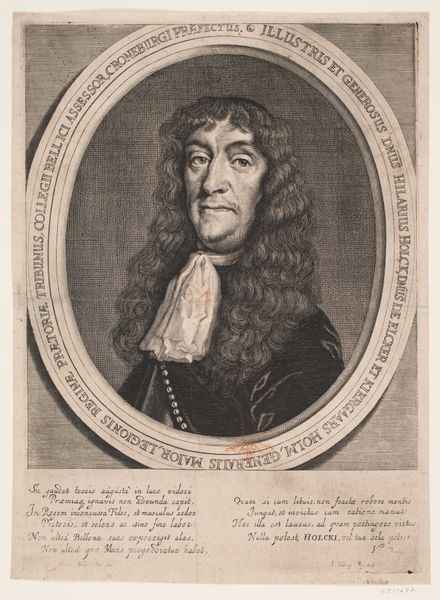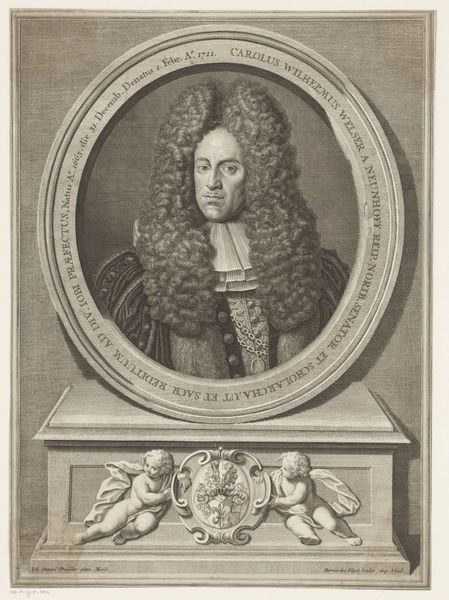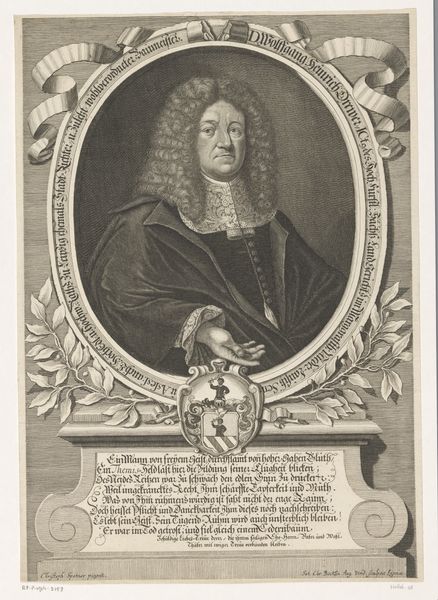
print, engraving
#
portrait
#
baroque
# print
#
old engraving style
#
history-painting
#
academic-art
#
engraving
#
realism
Dimensions: height 277 mm, width 178 mm
Copyright: Rijks Museum: Open Domain
This is a portrait of Joachim Ernst Rese, made by Heinrich Jakob Otto, and it's an etching. The beauty of etching lies in its indirectness. The artist doesn't directly cut into the metal. Instead, a waxy ground is applied, through which the image is scratched. Then, the plate is bathed in acid, which bites into the exposed lines. This process gives a unique texture, a kind of controlled roughness, which you can see especially in the rendering of Rese’s elaborate wig. The printmaking medium itself speaks to a specific moment in the history of art and labor. The artist relies on tools, techniques, and skilled traditions rooted in craft. Etchings like this one existed in a world before photography, a world in which the reproduction of images – especially of important people – was a laborious, highly skilled undertaking. It speaks to a time when the hand of the maker was more directly evident in the circulation of visual information. Understanding the materials and processes behind an artwork like this helps us to appreciate the craft involved, and its connection to wider social and cultural contexts.
Comments
No comments
Be the first to comment and join the conversation on the ultimate creative platform.
